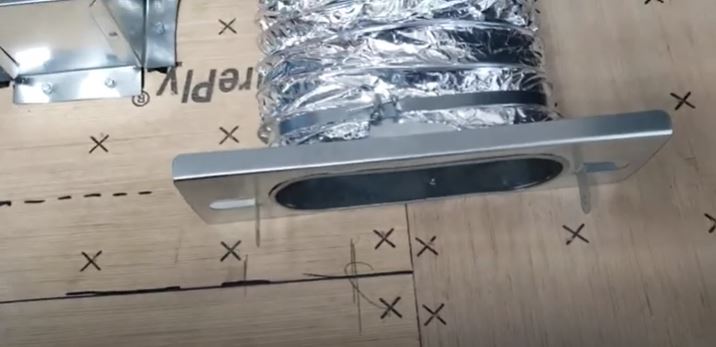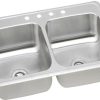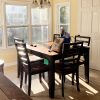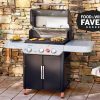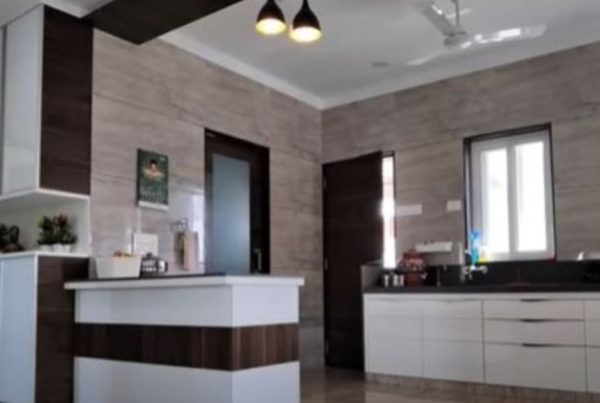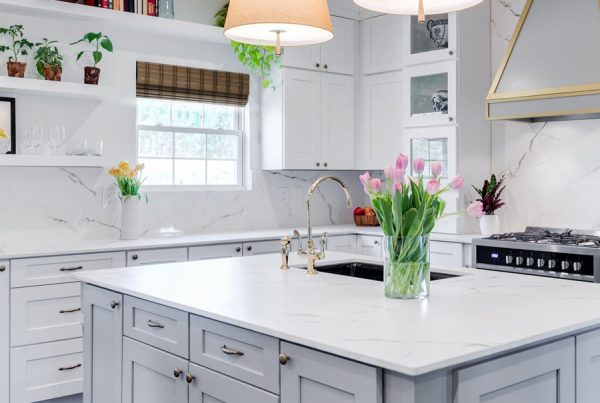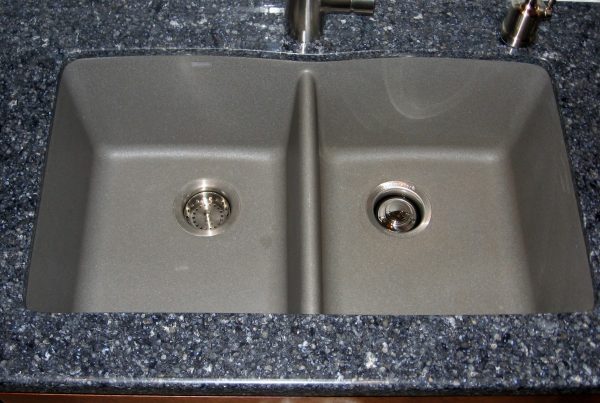Kitchen cabinets are crucial in defining a kitchen’s overall look and functionality. The essential but often overlooked components are toe kicks and the small space beneath the base cabinets. These modest structures serve aesthetic and practical purposes, providing a clean transition from the floor to the cabinet while allowing for comfortable standing during meal preparations. In this article, we will explore the best material for kitchen cabinet toe kick materials, helping you make an informed decision for your kitchen renovation or construction project.
SPECIFICATIONS
Item Weight: 2.5 pounds
Product Dimensions: 12 x 3.63 x 4 inches
Material: Sheetmetal
Item model number: Toe Ductor Kit
TODAY’S BEST DEALS
 REASONS TO BUY
REASONS TO BUY
- Durable and long-lasting, withstanding daily wear and tear.
- Water-resistant and easy to clean, making it ideal for a kitchen environment.
- Provides a seamless and polished look to the base of the cabinets.
- Available in various finishes and colors to match different kitchen designs.
- Resistant to scratches, scuffs, and impacts, maintaining its appearance over time.
REASONS TO AVOID
- It can be more expensive compared to some other materials.
- For example, limited natural aesthetics may not offer the same warmth as wood.
- Installation may require professional expertise due to precise measurements and cutting.
- Some materials may chip or dent if subjected to heavy force or weight.
- Limited design versatility, as it may need to be more easily customizable than other options.
Wooden Toe Kicks:
One of the Best material for kitchen cabinet toe kick is wood. Wood offers a classic and timeless appeal to any kitchen design. Maple, oak, and cherry are commonly used types of wood for toe kicks. These materials are sturdy, durable, and can withstand the demands of a busy kitchen. The Best kitchen cabinet toe kick material can be stained or painted to match the cabinet’s color, adding to the overall aesthetics. However, keeping them well-maintained is essential, avoiding prolonged exposure to moisture to prevent warping.
MDF (Medium Density Fiberboard) Toe Kicks:
For budget-conscious homeowners, MDF is a practical option for toe kicks. MDF is engineered from wood fibers, resin, and wax, creating a cost-effective yet durable material. While MDF may not have the natural beauty of wood, it can be painted to achieve various finishes. However, it’s crucial to note that MDF is more susceptible to damage from water, so it should be used in areas with limited moisture exposure.
Metal Toe Kicks:
Metal toe kicks are an excellent choice for those seeking a contemporary and sleek look. Stainless steel and aluminum are popular metal options known for their durability and resistance to wear and tear. Metal toe kicks can complement modern kitchen designs, especially in industrial or minimalist themes. Additionally, they are easy to clean and maintain, making them ideal for busy households.
Plastic/PVC Toe Kicks:
Plastic or PVC toe kicks offer versatility and affordability. These water-resistant materials make them suitable for kitchens prone to spills and splashes. They come in various colors and finishes, allowing homeowners to get creative with their kitchen design. Plastic and PVC are environmentally friendly options, as they can be recycled.
Stone Toe Kicks:
Stone-toe kicks are an attractive choice for a touch of luxury and elegance. Materials like granite and marble add a sophisticated appeal to any kitchen. Stone toe kicks are exceptionally durable and can withstand heavy use. However, they may require regular sealing to prevent stains and damage.
Tile Toe Kicks:
Tile toe kicks allow adding a pop of color or intricate design to the kitchen. Ceramic or porcelain tiles are commonly used for this purpose. Tile toe kicks are easy to clean and can withstand heat, making them a practical option for kitchens with stovetops. However, the grout between the tiles may require regular cleaning to prevent discoloration.
Glass Toe Kicks:
Glass toe kicks are an exciting option for a modern and upscale look. Tempered glass is used for safety reasons, ensuring it can withstand daily use. Glass toe kicks can be clear or frosted, adding a touch of elegance to the kitchen. However, it’s crucial to handle glass with care to avoid breakage.
Sustainable and Eco-Friendly Materials:
If you’re environmentally conscious, consider opting for sustainable toe-kick materials. Bamboo, for instance, is a renewable resource known for its strength and beauty. Reclaimed wood is another eco-friendly option, as it repurposes wood from old structures. Additionally, the Best kitchen cabinet toe kick materials are made from recycled plastic or other reclaimed materials, reducing your carbon footprint.
Choosing the Best material for kitchen cabinet toe kick Material for Your Kitchen:
Selecting the Best material for kitchen cabinet toe kick depends on various factors. Consider your kitchen’s style and the overall aesthetic you want to achieve. Assess your budget and long-term investment goals. Additionally, evaluate the level of maintenance you’re willing to undertake for the material you choose. The suitable material will enhance your kitchen’s functionality and complement its design.
Installation and Maintenance:
Installing toe kicks requires precision to seamlessly transition between the cabinets and the floor. Hiring professionals for the task is advisable, ensuring a perfect fit and finishing the article professionally. Once the toe kicks are installed, it’s essential to maintain them properly to preserve their appearance and functionality. Regular cleaning with a mild detergent and a soft cloth for wooden toe kicks can keep them looking fresh. Avoid using harsh chemicals that may damage the wood’s finish. If the wood gets scratched or dented, consider applying a touch-up stain or paint to restore its look.
For MDF toe kicks, take extra precautions to prevent water exposure. Wipe off any spills immediately and avoid using excessive water during cleaning.
The best material for kitchen cabinet toe kick is relatively low-maintenance and easy to clean. A damp cloth or mild cleaning solution keeps them shiny and new. Be mindful of using abrasive materials that could scratch the metal’s surface.
Plastic and PVC toe kicks are highly resilient and easy to clean. Wipe them down with a damp cloth or a gentle cleaning solution. Avoid using abrasive pads or cleaners that could scratch the plastic.
Stone toe kicks require periodic sealing to protect them from stains and damage. Use a stone-specific sealer and follow the manufacturer’s instructions for the best results. Regularly clean the stone with a pH-balanced cleaner to preserve its natural beauty.
Use a tile cleaner and a soft brush to maintain the tiles’ appearance. Avoid using acidic cleaners that could damage the grout.
Conclusion:
Selecting the best material for your kitchen cabinet toe kicks is a crucial decision that can significantly impact your kitchen’s overall aesthetics and functionality. Each material has its unique advantages and considerations. Wooden toe kicks offer a classic and warm appeal, while metal and glass toe kicks provide a contemporary and elegant touch. MDF and plastic toe kicks are budget-friendly, and stone toe kicks exude luxury.
Consider your kitchen’s style, your budget, and your sustainability preferences when making your choice. Regular maintenance will keep your toe kicks pristine and functioning optimally for years.
FAQs (Frequently Asked Questions):
Are toe kicks necessary for kitchen cabinets?
Yes, toe kicks are essential for kitchen cabinets as they provide a clean transition from the floor to the cabinet and offer ergonomic benefits.
Can I install toe kicks myself?
While DIY installation is possible, hiring professionals ensures precise and seamless results.
Which toe kick material is the most durable?
Stone and metal toe kicks are among the most durable options.
Are sustainable materials suitable for toe kicks?
Sustainable materials like bamboo and reclaimed wood are excellent choices for eco-conscious homeowners.
Can I paint or stain wooden toe kicks?
Remember, the Best material for kitchen cabinet toe kick can elevate the look and functionality of your kitchen, so choose wisely and enjoy the benefits they bring to your culinary haven.







